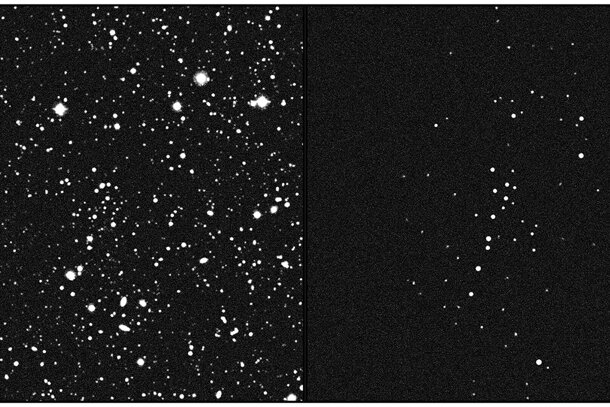A small collection of dozens of stars may have orbited the Milky Way for billions of years. This is probably possible thanks to dark matter.
An international research group has discovered a very faint, small dwarf galaxy made up of about 60 stars orbiting the Milky Way, which would not exist without a lot of dark matter. Therefore, the object, tentatively named Ursa Major III/UNIONS 1 or UMa3/U1, appears to be more than 10 billion years old. The team believes that if it had not been held together by dark matter, it would have been torn apart by our galaxy during this period long ago. It is difficult to imagine how this object could be described in any way other than as the darkest matter-dominated structure we know. After all, even the smallest known galaxies contain thousands or even millions of stars.


It is very likely that there is a lot of dark matter.
As the team now explains, the tiny neighboring galaxy was discovered in data from the Canada-France-Hawaii Telescope observing the stars of the Hawaiian volcano Mauna Kea. Subsequent observations showed that groups of stars also moved through the inner region of the Milky Way along orbits. At the same time, early analyzes show that the star itself is very old, dating back to the very beginning of the universe. Therefore, despite the unusually small number of stars, it is assumed that what we are seeing is a dwarf galaxy and not a star cluster. The biggest feature is that it is assumed that there is a huge amount of dark matter holding the structure together.
UMa3/U1 is either the faintest old cluster or the darkest and closest dwarf galaxy discovered to date. The group also tends to favor this explanation because the existence of faint, old satellites of galaxies dominated by dark matter is a fundamental prediction of the Standard Model of cosmology. But only if evidence of large amounts of dark matter is actually discovered could it provide strong support for the hypothesis that the object is so-called cold dark matter. This requires accurate data on the speed of movement of individual stars, which still needs to be collected. Nonetheless, this is already an important discovery, according to the team.
Dark matter is a form of matter that has not yet been observed experimentally and is intended to explain the measured movements of galaxies and galaxy clusters. Scientists hypothesize that there is much more dark matter in the universe than standard matter. So much more is explained by the equally mysterious dark energy. Although it has not yet been observed in space or in the laboratory, this theory is considered accepted because it answers many fundamental questions. Nevertheless, alternative explanations are repeatedly proposed, and astronomical observations that do not fit dark matter are also being made. The discovery of UMa3/U1, now published in The Astropysical Journal, is quite different.
If you find a mistake in the text, please select the mistake and press Ctrl-Enter to send a message to the author.


